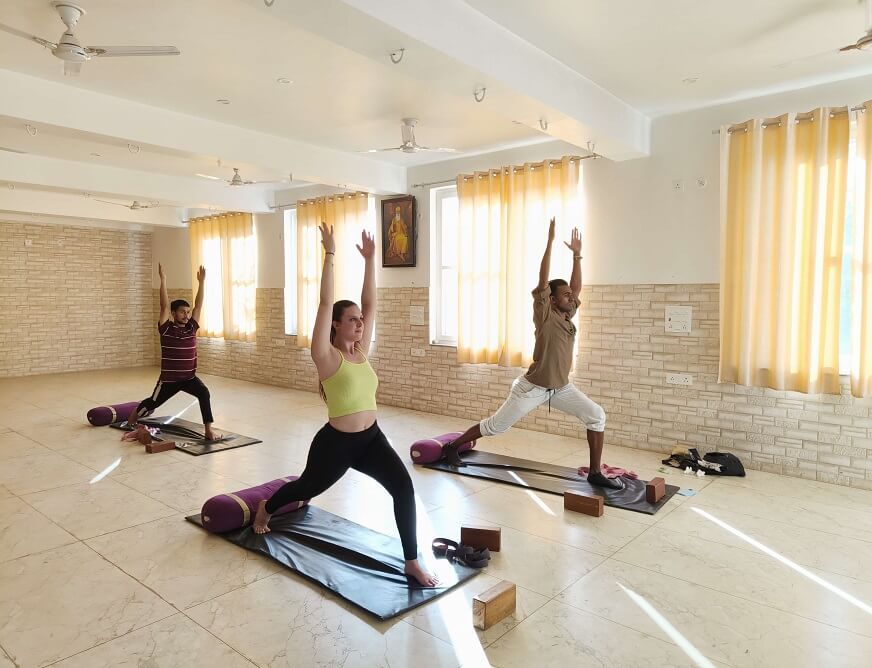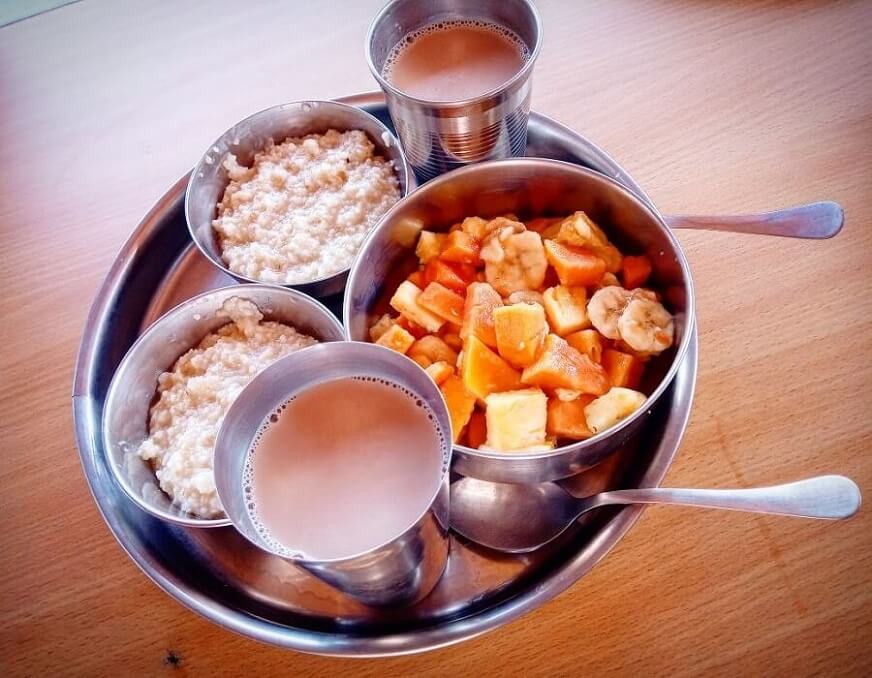Course Highlight:-
Course : 300 Hours YTTC Duration: 30 Days Date: 01st - 30th of every month Certification: YOGA ALLIANCE Level: Intermediate Module: Residential With MealsCourse Fees
Double Sharing Room: US $1500
Private Room:
YOGA FOR Intermediate
🧘300 HOURS YOGA TEACHER TRAINING IN RISHIKESH, INDIA🧘
Today Yoga is experiencing a recovery from leaps , with its all encompassing medical advantages being broadly acknowledged and deductively demonstrated, people are moving towards Yoga. Yoga's consequences for Physical, Mental, and Spiritual prosperity are being valued and looked for after by an inexorably wellbeing cognizant open. In any case, in the midst of this restoration, the inquiries in the brains of Yoga devotees and hopeful Yoga coaches continues as before, "Where would it be advisable for me to contemplate Yoga? How to recognize the correct mentor? What sort of Yoga preparing would it be a good idea for me to go for? What are the accreditations that increase the value of my training?"
As you battle with these inquiries, Rishikesh is the spot to head, as it has become famous for many centers which offers life changing courses in Yoga and is popularly Known as the world capital of Yoga. Rishikesh is touted by numerous individuals to be the otherworldly origin of Yoga.
Individuals from everywhere throughout the world go to the district to hone their Yoga rehearse and get familiar with the antiquated order. YogSutra, Rishikesh is very much like a house of hope , preparing focus settled in the district that targets grasping Yoga darlings and spreading the intensity of Yoga past every single geological fringe.
A universally presumed Yoga Training and Teaching Center, wherein they offer 100,200 and 300 training courses for people who enjoy practicing Yog, and are willing to spread the same. Their prospectus is mindfully drafted to help students/yoga fans to become mentors, thought-pioneers, and dynamic supporters of the Yoga people group.
Our point by point and time-sharpened schedule guarantees quality outcomes for you and your understudies.
Our Speciality
Yoga School Rishikesh offers 200, 300, and 500 hour residential yoga certification courses in India in accordance with Yoga Alliance guidelines. Rishikesh Yog Sutra is also an extension center of Hemwati Nandan Bahuguna Garhwal University (A Central University in India). Our Yoga Teacher Training programs meet university requirements for a one-month "Certificate Course in Yoga". We offer 200 hour yoga courses from two beautiful yoga ashrams in Rishikesh. These ashrams are nestled in tranquil and peaceful surroundings and yoga students come from around the world to learn more about the ancient discipline.
- Double Occupancy: US $1300* (Accommodation + Meals)
- Single Occupancy: US $1500* (Accommodation + Meals)
Yoga TTC Syllabus/Curriculum
The Yoga Trainings practice of Aasanas and pranayama is imperative for a Yogi to fortify the mind, body, and soul.
Mantra is a word or sound repeated to aid concentration in Meditation. The reverberating sound harmonious the body and mind.
The outcome of learning this subject is that the Yogi can discern the various nuances of the human body in a more enriched fashion.
You cannot claim to be a Yoga Teacher unless you familiarise yourself with the necessary techniques of teaching an Asana session.
Patanjali Yoga Sutras (Patanjali is the father of yoga). Each Friday, students will lead a discussion reflecting on the week's readings.
Pranayama is the yogic practice of focusing on breath. Techniques of Praanaayama.
Yoga TTC Shedule
The 200 hour Yoga Teacher Training Course at Rishikesh Yog Sutra follows a strict schedule in compliance with Yoga Alliance standards. Nearly 6 to 7 hours of training time are assigned to some aspect of yoga each day. You could find the training intensive but enlightening.
| Time | Activity | Course Includes | Beyond the Courses & Excursions: |
| 05:30 am | Wake Up | 11 Nights of Private or Shared Accommodation | ✔ Opening Hawan (Fire Ceremony) |
| 06:00 am | Herbal Tea | Free Pickup from Dehradun Airport | ✔ Parmarth Niketan Ashram (Ganga Aarti) |
| 06:15 am | Nasal Cleansing | 3 Times Daily Nutritious Vegetarian Meals and Herbal Tea | ✔ Kunjapuri Temple Tour (Sunrise view) |
| 06:30 am | Mantra Chanting & Pranayama | Cleansing Kit | ✔ Outdoor Yoga by the Ganges |
| 07:30 am | Yoga Asana | Training Manual and study material | ✔ Meditation Cave Tour (Mouni/Vashishtha) |
| 09:00 am | Breakfast | 24/7 support during your stay at the School | ✔ 13th floors Bhootnath Temple (Sunset view) |
| 11:00 am | Yoga Philosophy | Theoretical and Practical Skills | ✔ 100 Years old Beatles Ashram |
| 12:00 pm | Yoga Anatomy | Wifi Access | ✔ Classical music concert (with Gurukul students) |
| 01:30 pm | Lunch | Weekend Excursions | ✔ Dance Class (Bollywood, Classical) |
| 02:30 pm | Self study / Assignment | Kirtan and Movie Night | ✔ Satsang Retreat by the Ganges |
| 03:30 pm | Alignment and Adjustment | 24 X 7 CCTV Surveillance | ✔ Beech Yoga |
| 05:00 pm | Yoga Asana | Air fare (Not Included) | ✔ Yoga School certification |
| 06:30 pm | Meditation | Private Accommodation- 299 USD Extra (Not Included) | |
| 07:30 pm | Dinner | Room Heater - 100 USD Extra (Not Included) | |
| 10:45 pm | Lights Out | Air-conditioner- 100 USD Extra. (Not Included) |
Yoga TTC Course Date
300 hour Yoga Teacher Training in Rishikesh, India offered by Yog Sutra Rishikesh. Certified by Yoga Alliance, USA








